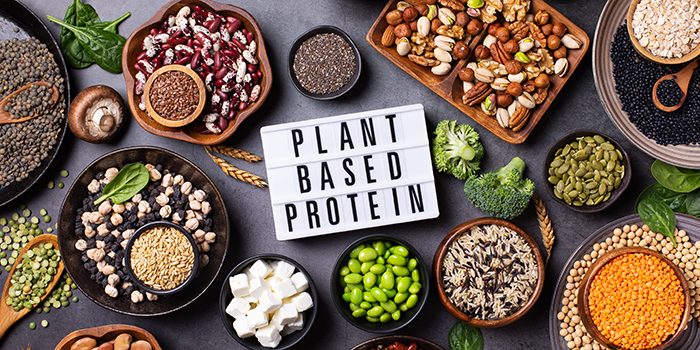Thinking about cutting down on animal products or going fully plant-based? One of the biggest questions people ask is: “How do I get enough protein?” The good news is, there are plenty of plant-based protein sources that are healthy, filling, and easy to add to your meals.
Why Plant Protein Is a Great Choice





Top Plant-Based Protein Sources
- Lentils – 18g protein per cup, great in soups or salads
- Chickpeas (Garbanzo beans) – 15g per cup, perfect for hummus or curries
- Tofu – 10g per 100g, super versatile (grill it, bake it, blend it)
- Tempeh – 19g per 100g, nutty flavor and firm texture
- Edamame – 17g per cup, fun and easy snack
- Quinoa – 8g per cup, a complete protein and gluten-free
- Black beans – 15g per cup, delicious in burritos or bowls
- Pumpkin seeds – 7g per 30g, great for topping oatmeal or salads
- Oats – 5g per half cup, plus fiber and iron
- Nut butters (like almond or peanut butter) – 7–8g per 2 tbsp
Tips for Getting Enough Protein on a Plant-Based Diet
- Eat a variety – Mix different sources to get all essential amino acids.
- Add protein to every meal – Even breakfast can be protein-rich (like oats with nut butter and seeds).
- Snack smart – Try hummus with veggies, roasted chickpeas, or protein smoothies.
- Try plant-based protein powders – Made from peas, hemp, rice, or soy—great for post-workout.
Sample Plant-Based Protein Day
- Breakfast: Oats with almond butter, chia seeds, and berries
- Lunch: Quinoa salad with lentils, avocado, and pumpkin seeds
- Snack: Edamame or a smoothie with plant protein powder
- Dinner: Stir-fry with tofu, broccoli, and brown rice
Final Thought
You don’t need meat or dairy to meet your protein needs. With a little planning and variety, a plant-based diet can give you all the protein your body needs to thrive, build muscle, and stay strong.




